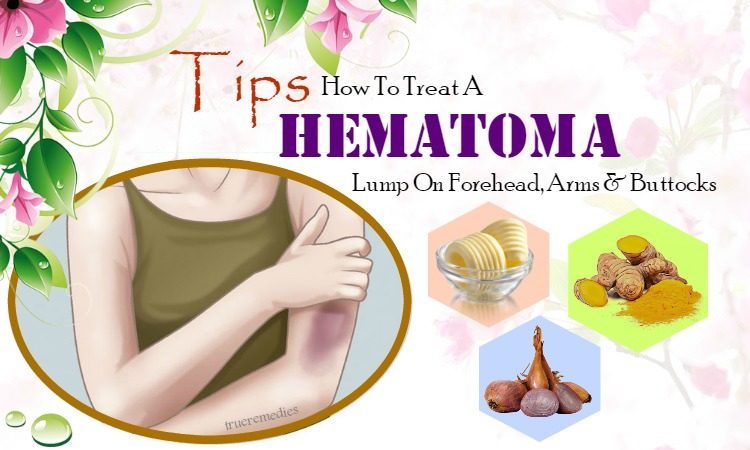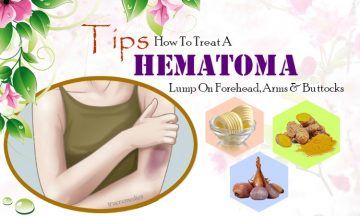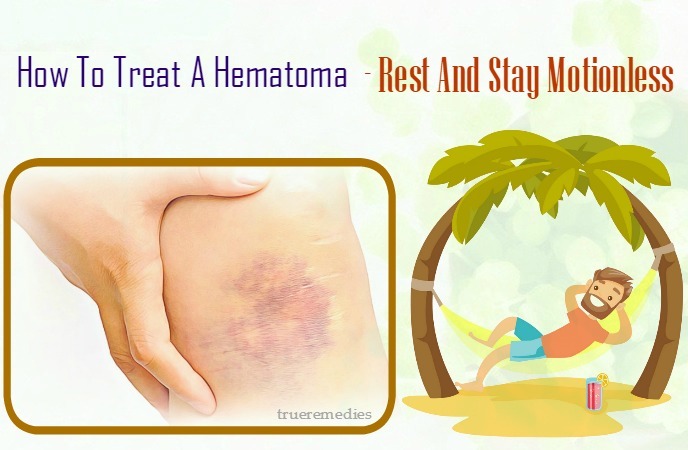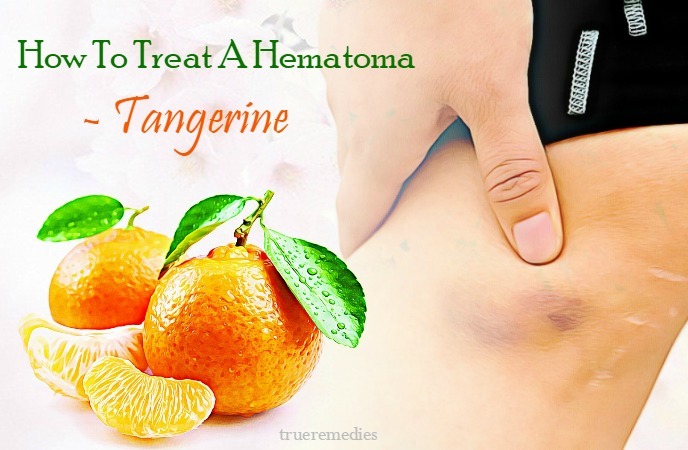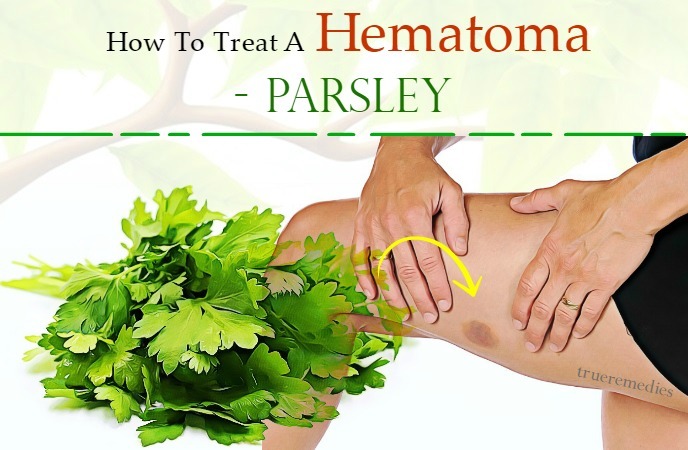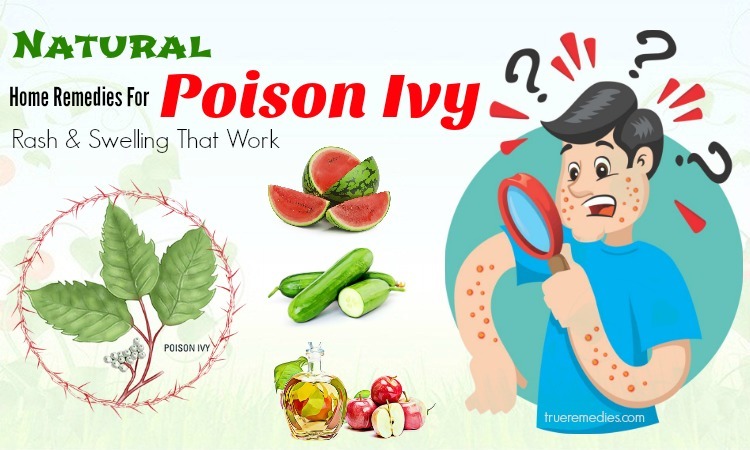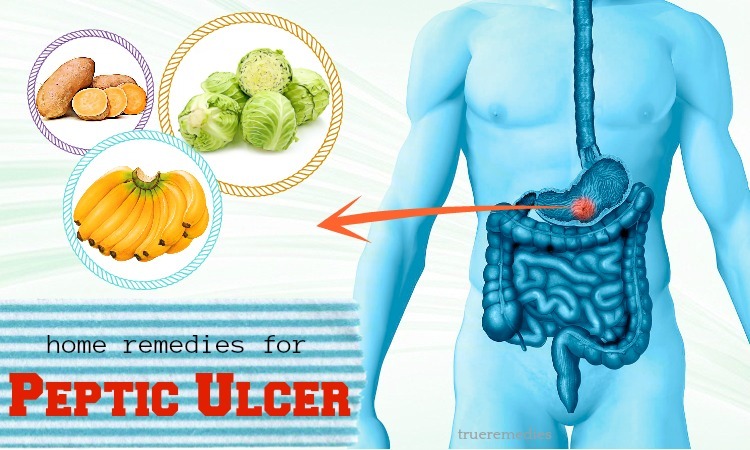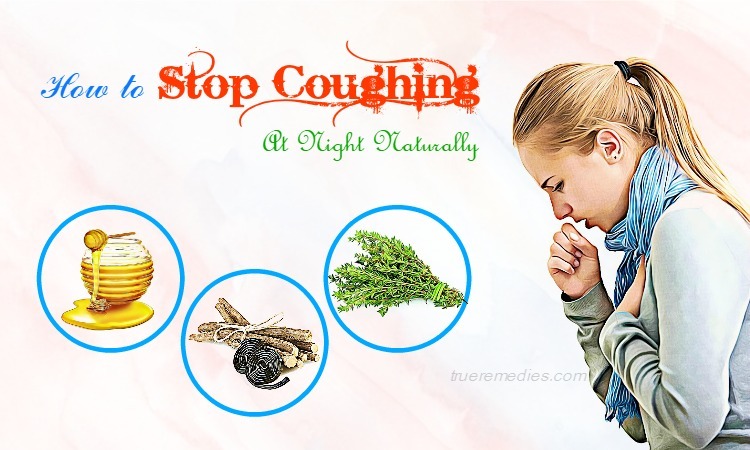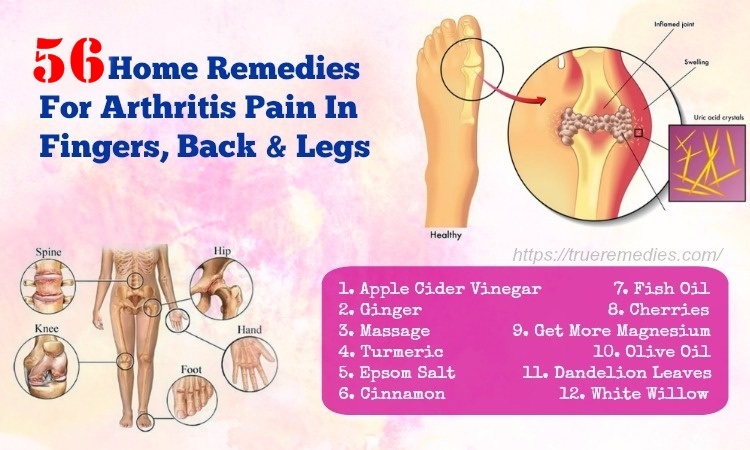Updated: 11/14/2019
Contents
Hematoma is a condition in which the blood accumulates beneath the skin. It may appear as a bruise. This condition is often caused by a body injury that causes blood vessels to rupture and bleed. Large hematoma can be dangerous because the pressure of blood vessels can squeeze blood vessels and block blood flow. While it is best to see a doctor, you can still try to heal the hematoma at home. The article below will give you tips that can help you to treat hematoma quickly and safely. But first, let's find out some information about this condition in order to determine the most accurate of your situation.
What Is A Hematoma?
Hematoma is a phenomenon in which blood is concentrated in soft tissue outside the bloodstream. It is usually fluid within the tissue. It is usually the result of bleeding due to trauma. Hematoma looks like a big bruise. Hematoma may be as small as a red dot. Unfortunately, in some cases, hematoma can affect a large area of the skin and causes severe inflammation. The blood vessels in the body are constantly recovering. If there is strong pressure in the blood vessels, especially in the aorta, the blood will quickly leak through the damaged wall and the hematoma will appear and gradually spread.
When released from blood vessels, blood is easily stimulated with surrounding tissues and can cause inflammatory symptoms such as pain, swelling and redness [1] [2] [3]. The location and size of the hematoma will determine its manifestations. Hematoma can occur anywhere in the body. If the size exceeds 10 mm, this condition is called ecchymosis. Hematuria is divided into the following forms:
- Subdermal hematoma: a type of hematoma that appears just below the skin.
- Cephalopithelioma: a type of hematoma that occurs in the middle of the skull and bone membrane (the membrane that covers the outside of the bone).
- Epidural hematoma: a type of hematoma that occurs between the membranes (one of the membranes covering the brain and spinal cord).
- Subdural hematomas: a type of hematoma that appears between the second layer of the brain and the spinal cord and the epidermis.
- Subarachnoid hematoma: a type of hematoma that occurs in the middle of the soft membrane (inner membrane of the brain and spinal cord) and the second layer of the brain and the spinal cord.
- Perianal hematoma: a type of hematoma that appears in the area around and inside the anus.
- Subungual hematoma: a common form of hematoma, which appears beneath the nail.
What Are Common Causes Of Hematoma?
Injury is one of the major causes of some forms of hematoma. When playing sports such as martial arts, boxing or football, you risk injury in many different parts of your body. However, there are also other causes for hematoma [4] [5]:
- Coagulation Disease
With conditions such as diabetes or blood clotting disorder, blood is difficult to coagulate. In some cases, blood cannot coagulate. This makes patients with these diseases more likely to develop hematoma.
TrueRemedies Partner Solutions

Need a Help from the Leading Expert Online, Available 24/7?
They’re all here and ready to answer your questions online or by phone. Keep asking questions until you get the answer you need.
- Work Environment
When working in places where there is a high risk of injury, such as construction sites, you are more likely to get it. The most common types of hematuria associated with occupation are subdermal hematoma and subungual hematoma.
- Age
Older people and young children are more at risk of developing hematomas (especially subdural hematuria) due to weak blood vessel structure.
- Alcohol Abuse
Drinking alcohol for a long time will make it easier for you to develop hematoma. Alcohol causes vasodilation, which causes blood vessels to become vulnerable.
- The Birth Process Is Not Normal
During the mother's birth with the aid of a vacuum, the newborn baby is at risk of hematuria under the scalp. The second stage of prolonged labor may also lead to this form of hematoma.
What Are Common Symptoms Of Hematoma?
Hematological symptoms depend on the size and location of the hematoma. The following symptoms are usually associated with hematoma:
- Pain
Pain is one of the most common symptoms of hematoma. Pain is caused by inflammation of the tissue at the affected area.
- Swelling
Blood in the affected tissues will cause tissue inflammation and eventually swelling.
- Redness
Redness in the location of hematoma is due to the accumulation of blood beneath the surface of the skin (subdermal hematoma) and inflammation.
- Headache And Confusion
In the case of epidural hematoma, the blood pressure builds up, causing the surrounding tissues to become inflamed. This causes you to suffer from headaches. Confusion also occurs because the hematoma begins to compress the nerves in the head.
- The State Of Consciousness After Unconsciousness
The state of consciousness occurs immediately after blood begins to accumulate. As the blood continues to circulate, you can lose consciousness.
- Weakness In The Limbs
This is a symptom of severe cephalopitheliom. Hematoma will compress the pathways of the diagonal bundle (the pathway of the nervous system), which causes weakness in the limbs.
You may experience other symptoms not mentioned. If you have any questions about the signs of the disease, please consult your doctor.
What Are Complications Of A Hematoma?
Usually, a hematoma is associated with a large number of complications. Some complications are regularly seen and observed by healthcare professionals, including:
- Swelling and inflammation of your infected area
- The higher risk of infections to another organs or tissues
- Irritation around the muscles, organs or tissues
- Old blood might create a hematoma because no new blood supply to the hematoma can result in a hematoma’s contracting colonization with the bacteria.
What Are Risk Factors?
Hematoma is a very common condition. This condition usually occurs in people who regularly play sports. According to a recent statistic, men are more at risk of hematoma than women. You can control this problem by minimizing risk factors. Please see your doctor for more information.
When To See A Doctor?
For any disease, especially hematoma, it is very important to be diagnosed and treated early to prevent this condition from getting worse. As soon as you notice the signs of the hematoma, especially if it appears in the head, you should see a doctor.Besides, if you have any questions, please consult your doctor. Each person's condition is different, so please consult your doctor to select the most suitable option.
Above is useful information about hematoma. It’s is time to find out what the best natural tips on how to treat hematoma hematoma lump on forehead, arms and buttocks at home is. Please take a look at TrueRemedies.com!
Top 23 Tips On How To Treat A Hematoma Lump On Forehead, Arms & Buttocks At Home
1. Rest And Stay Motionless
This is the first home remedy in this list of tips on how to treat a hematoma that we want to mention in this article. Muscle activity and movement can cause irritation, increase pressure on soft tissues, and stimulate inflammation. You should maintain relative rest for the first 48 hours if possible. Keeping the body in the normal position (lying on your back, palm and foot upside down) is helpful in healing. This can also prevent more injuries, which is especially true for injuries in the limbs and joints.
2. Apply Cold Compress Immediately
A simple tip on how to treat a hematoma lump at home is cold compress. This method should be done within 24-48 hours after the injury. Apply a nice pack to the affected area after you notice the hematoma begins to appear. Low temperature helps slow blood flow and reduces bleeding. Do not apply this tip for the skin over 15-20 minutes to avoid tissue damage. Besides using ice pack, you can dip a towel on cold ice water (18-27 ° C) and apply it to the wound for about 10 minutes. Repeat this 4-8 times daily to reduce the local skin temperature to 10-15 ° C.
Cold temperatures cause vasoconstriction (constriction of the blood vessels), while reducing swelling due to trauma and hematoma. In the early stages of injury, vasoconstriction helps to reduce bleeding and reduce the affected area. The cold compress method also slows down the metabolism of tissues at the traumatic area, thereby reducing the chance of hypoxia, a form of cell damage caused by decreased oxygen transport.
3. Apply Warm Compress During Injury Recovery (After 24-48 Hours)
To apply warm compress, the temperature should be between 37-40 ° C. In contrast to cold compress, warm compress is more useful during recovery because warm temperatures dilate blood vessels, improve blood circulation and transport nutrients necessary for healing. Increased blood circulation also helps to clear away inflammation and wound waste. In addition, the feeling of warmth also acts as a stimulant which reduces the pain caused by trauma.
Note: The warm compress method should not be used in the early stages after injury – vasodilation will be harmful during this time. The same situation occurs if you massage the injured area and drink alcohol (both actions can dilate the blood vessels and increase blood circulation).
4. Choose Activities That Dilate Vessels After The Injury
If you want to know how to treat a hematoma naturally at home, you need to choose the activities dilating vessels after your injury. As a reminder, this time period is 24-48 hours after the injury. You can apply the following methods to treat hematoma:
- Massage
Massage with circular motions to improve blood circulation and increase blood flow to the heart. This method can also directly dissolve blood clots near the surface of the skin, helping the body dissolve blood clots more easily. Stop if you feel pain [6].
- Take A Warm Bath
Similar to warming, a soak in a warm bath will also stimulate vasodilation. This method not only helps to relieve pain, but also removes blood clots from the trauma – all thanks to increased blood flow.
- Isometric Exercises
Basically, these exercises focus on tightening both muscles (folding and stretching muscles) at an organ that does not move strongly. These types of muscle contraction help increase blood circulation by contracting blood vessels in a smooth manner, thereby increasing blood flow.
5. Raise The Injured Area
The next tip on how to treat a hematoma hematoma lump on forehead, arms and buttocks naturally is raising the injured area. This is especially useful for injuries. Raising the area of hematoma will reduce blood flow to this area and prevent the enlargement of the hematoma. Use a pillow or blanket to cover the injured area. Try to get the injured area higher than the heart. This helps reduce capillary pressure at the injured area, prevents swelling, supports lymphatic drainage, dissolves diarrhea and reduces the pressure on tissues. This also helps to relieve pain locally and eventually speeds up the healing process.
6. Margarine
If you do not a fan of cold compress, consider using margarine. In fact, some children do not like the cold feeling of applying ice, in such case, margarine is an alternative to apply on their bruises. Margarine has the ability to limit the potential risk of swollen wounds.
7. Tangerine
You can take 20 grams of tangerine ramie leaves to wash, then dry them out. Next, pour approximately 400ml of water to those leaves, boil till you achieve just 100 ml of water. Enjoy this liquid twice per day for 3-5 days to get the best results.
You can also grind clean tangerine leaves and apply it over your problematic area for 3 hours before removing it off.
8. Shallot
You can take 50 to 100 grams of shallot leaves to wash, then grind and mix with 10 grams of red sugar. After that, apply this mixture to your affected area once per day. Alternatively, grind 50grams of fresh shallot roots and fry it with 100ml of 90-degree alcohol before applying to your wound. Reapply this method thrice per day to harness its benefits.
9. Eat More Protein-Rich Foods
This sounds strange when it comes to at-home tips how to treat a hematoma hematoma lump on forehead, arms and buttocks, but it works. Protein is good for healing tissue. Foods with high protein content are more likely to be derived from animals than from plants. Here are some examples of proteins that range from the highest to the lowest in biological value (easier to absorb into the body):
- Whey protein separation
- Shasimi tuna
- Wild salmon
- Flounder
- Scrambled eggs
- Turkey breast
- Deer meat
- Cheese made from skimmed milk
- Pilchard
- Chicken breast
- Lamb's thighs
- Soya protein
- Sparerib
- Fried egg
- Ground beef
- Hot dog
10. Get Enough Vitamin B12
The next one in this list of tips on how to treat a hematoma at home is getting enough vitamin B12. Vitamin B12 deficiency (cobalamin) can also make the body vulnerable to hematoma, anemia, and bad blood clots. This is especially true for vegetarians – plant-based foods do not contain vitamin B12 unless they are fortified. If you are a vegetarian, perhaps taking supplements is a good idea. Natural vitamin B12 is found in many foods of animal origin, including viscera (cow's liver), oysters, meat, poultry, eggs, milk and dairy products, some grains and gourmet yeast.
11. Get Enough Vitamin K
Vitamin K deficiencies (K1 – phylloquinone and K2 menaquinone) can be caused by lack of fat absorption and / or by the use of antibiotics. Reduced blood clotting and hemorrhagic disorders are often associated with vitamin K deficiency. The sources of vitamin K through the diet include: green tea, leafy vegetables (such as rainbow trout, kale, parsley, and spinach), broccoli and cauliflower, Brussels sprouts, liver, soybean oil and wheat bran.Fermented milk (including yogurt and cheese) and fermented soybeans (including miso and natto) are the rich sources of menaquinone.
You can also use functional foods if your diet cannot provide enough vitamin K that your body needs. The recommended daily intake of vitamin K for adults is 120 mcg for men and 90 mcg for women.
12. Take More Vitamin C
Vitamin C is highly important for treating a hematoma, so it is why this antioxidant vitamin is mentioned in this list of tips on how to treat a hematoma at home. The addition of vitamin C (ascorbic acid) daily can help form new connective tissue, maintain and repair tissues, especially useful for blood vessel walls. The rich sources of vitamin C are papaya, bell pepper, broccoli, strawberry, pineapple, cauliflower, and oranges. Generally, the consumption of a variety of foods is sufficient to meet the needs of macronutrients and micronutrients – supplementary foods are prescribed only in special cases such as malnourished patients and pregnant women.
13. Drink A Lot Of Water
Maintaining enough water for the body and increasing the intake of liquid also benefits for your condition. Remember to drink water whenever you feel thirsty or at least 1.5 -2 liters of water per day. In fact, the amount of water you need to drink daily depends on your weight, height and daily activities. The more you drink, the more poison is excreted from your body. You will feel this through your waist, hair, skin and nails. Drinking water is the best. Besides, sugar-free fruit juices and decaffeinated tea are also good. You should only drink these types of drink with moderate amounts.
14. Turmeric
This is another must-try herbal tip on how to treat a hematoma naturally at home. Turmeric has anti-inflammatory properties and this ingredient can help prevent more infections at the injured area. Essence in turmeric increases blood circulation and increases the number of red blood cells, so that the hematoma will be much easier to absorb [7].
Dissolve 1 teaspoon turmeric powder in a glass of milk and drink once a day. You can also use turmeric as a spice when cooking. Apply this method until the hematoma disappears. Turmeric is known to contain medicinal ingredients, but there is no scientific evidence to support this. If you want to use turmeric powder, you should remember to use with other supplements.
15. Eggs
How to treat a hematoma at home without too much cost? Think of eggs. This is really an easy-to-find and dirty cheap way to get rid of a hematoma. The surface of the egg has tiny holes – tiny tubes leading to the egg yolk. You need to boil an egg before rolling it onto the hematoma. Then, the eggs will have a fairly high temperature and it will create a large pressure in the egg yolk to gradually faint hematoma. You need to do this about 2-3 times a day until your condition is completely treated. This method is especially effective for newly formed hematoma.
16. Parsley
The next simple but effective tip on how to treat a hematoma at home is using parsley. Parsley is rich in vitamins which are able to heal hematoma caused by injury (not open wound). Parsley also has good anti-inflammatory and analgesic properties. This is a very simple, economical and efficient way. All you need to do is:
- Cleanse the affected area
- Crush a handful of parsley leaves
- Apply it to the hematoma
- Use a bandage to fix it
This tip works very quickly. You can apply it 1-2 times a day to get the best effect.
17. Aloe Vera
Most of us know that aloe Vera is good for the skin. However, you will surely be surprised to learn that aloe vera is also capable of treating hematoma. When used to treat bruises and hematomas, aloe Vera acts as an antibiotic and an analgesic. Aloe Vera gel also contains a variety of vitamins to help speed up the healing process. All you need to do is:
- Cleanse the affected area
- Apply aloe Vera gel to the hematoma
- Massage gently for about 3-5 minutes
Do this 2-3 times a day for best results.
Besides, you can also mix aloe Vera with parsley to treat a hematoma. All you need to do is:
- Cleanse the affected area
- Mix a handful of parsley leaves and 1 teaspoon of aloe Vera gel
- Crush them
- Apply this mixture to the hematoma
- Use a bandage to fix it
You can do this 1-2 times a day until your condition is thoroughly treated.
18. Onion
Using onions is one of the common home remedies for hematoma. In addition to analgesic effects, onion also has antibacterial and anti-inflammatory properties. Therefore, it is used to treat certain conditions such as hematoma, blood vessel blockage, sprains and swelling. To use onion to treat a hematoma, all you need to do is:
- Cleanse the affected area
- Crush 2-3 fresh onions
- Apply crushed onion to the hematoma
- Use a bandage to fix it
Please apply this tip 1-2 times a day to get the results you want. Note that this tip is not for open wounds.
19. Cabbage
Using cabbage is one of the best ways on how to treat a hematoma at home. Cabbage contains a lot of vitamin C and K. As you know, these are two vitamins that are essential for the recovery of hematoma. The use of cabbage to treat this condition is also very simple. All you need to do is:
- Prepare 2-3 cabbage leaves
- Cleanse the affected area
- Apply cabbage leaves to the hematoma
- Use a bandage to fix them
You can do this 2-3 times a day to see how effective it is.
20. Coconut Oil
The next way on how to treat a hematoma at home is using coconut oil. Coconut oil is always known for its antibacterial properties. The use of coconut oil for hematoma will improve blood circulation in this area. This natural oil also contains many antioxidants and vitamins which are good for the treatment of wounds. As a result, this condition will gradually be treated. To use coconut oil to treat hematoma, please apply these steps below:
- Cleanse the affected area
- Apply coconut oil to the hematoma
- Massage gently for about 3-5 minutes
Let’s apply this tip 2-3 times a day to treat your hematoma.
You can also mix chili powder with coconut oil to treat your condition. All you need to do is:
- Mix 5 teaspoons of coconut oil with 1 teaspoon of chili powder, stir well
- Cleanse the affected area
- Apply the above mixture to the hematoma
- Massage gently for about 3-5 minutes
- After 15-20 minutes, cleanse the affected area with cool water
You can do this 1-2 times a day.
21. Apple Cider Vinegar
Apple cider vinegar can increase blood flow near the surface of the skin. In addition, this naturally fermented vinegar can also treat inflammation and swelling. Therefore, you should use it for your situation. All you need to do is:
- Mix apple cider vinegar with water in a ratio of 2:1
- Cleanse the affected area
- Apply the above mixture to the hematoma
- Massage gently for about 3-5 minutes
Apply this tip 2-3 times a day to treat your condition. In addition, you can mix apple cider vinegar with egg white in a ratio of 3: 1 and perform the same steps as above. This method can also help you get rid of hematoma.
22. Tea Bag
Using tea bag is the last one in this list of how to treat a hematoma lump on forehead, arms and buttocks naturally. Both green tea and black tea are rich in tannins which help reduce swelling and blood vessels. Therefore, they are often used to treat hematoma and bruise. All you need to do is:
- Dip a tea bag into hot water
- Cleanse the affected area
- Apply the tea bag above to the affected area
- Leave it on the skin until it is no longer warm
Implementing this tip 1-2 times a day is what you should do for your condition.
23. Take Pain Medication
If you do not have other illnesses or do not use anticoagulants, you can take almost any pain medicine. Ibuprofen is usually the choice of many people, but you may need to talk to your doctor to find out what is best for you. You can take oral medications at doses of 200 to 400 mg.
Treating a hematoma at home is not difficult if you know the right way to do it. The aforementioned tips are tested-and-tried and got many positive feedbacks from people worldwide. As you can see, they are all very simple and safe without causing any harmful side effects. Thus, do not hesitate to try out some of them and share your experience with us.
If you have any contributing ideas about our article of “Top 23 Tips On How To Treat A Hematoma Lump On Forehead, Arm & Buttocks At Home” introduced in How To Category, feel free to drop your words below this post. We will answer as soon as we could.

